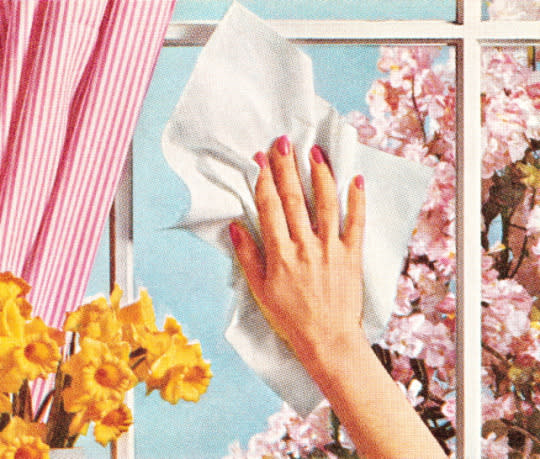How To Clean Your Home The Eco Friendly Way

One of the biggest ironies of cleaning your home—or, if you’re lucky, having it cleaned—is how it involves polluting indoor air and wiping questionable chemicals all over counters and surfaces. That’s not clean. Here’s how and why to use plant-based cleaners plus safer household staples to truly clean instead of pollute your space. It’s not as hard as you might think.

Do you even know what’s in your cleaners? Don’t bother flipping around that spray bottle to read its ingredients; there won’t be any. Cleaning product formulas are currently protected by the government as trade secrets. That’s too bad. Chances are you’d like to know what your bottle contains, considering typical chemicals used in cleaners have been linked to everything from cancer to ozone depletion. In the absence of ingredient lists, the best you can do is look for warnings. If your cleaner has the words “danger,” “toxic,” “hazardous,” “poison,” “flammable,” or other cautionary words printed on the label, it’s time to find a new one. Also? If a label directs you to use only in a well-ventilated area, and your bathroom doesn’t have a window, follow the directions and don’t use it.

There are companies making products out of plant-based instead of synthetic ingredients that voluntarily disclose their ingredients on their products. Choose these. If they have third party independent certification backing up any green or natural claims, even better. These are widely available. If you can’t find any in stores near you, shop online.

Synthetic fragrances like cleaning product formulas, are considered trade secrets. There’s no telling what exactly is in them, but typical chemicals used to make fragrance have been linked to a whole range of health issues—from hormone disruption to asthma. If you like a scent in your home, look for products containing natural essential oils instead of fragrance chemicals. Or buy some essential oils and mix your own house blend.

Performance claims on conventional cleaners promise the moon! They whiten, brighten, and offer untimely death to a whole host of germs, not to mention streak-free shines. These performance claims indicate added chemicals to boost formulas. These boosters might not be the sort of thing you want lingering as residue on your bathroom sink or your kitchen cutting board—or going down the drain and out into the environment. What you want is a generally clean house, so use a product with a basic promise. Also, there’s no need to disinfect everything in sight unless someone in the house has been sick. In fact, over-disinfecting, according to the Hygiene Hypothesis, may be harming our health, not helping it. Conventional cleaners tend to contain antimicrobial agents to kill viruses, fungi, and bacteria, many of which are known to be harmful to humans as well as aquatic life. Safer disinfecting alternatives include hydrogen peroxide and oils of thyme and oregano.

Even if you are not a crafty person, it’s beyond easy to make a cleaning product that’s so safe to use you could eat it. As in: mix vinegar and water. Presto! You have glass cleaner. Want a tub scrub? Mix some baking soda with plant-based dish soap. If you want to get fancier than that, there are tons of resources for safe DIY cleaning products. Many of them are surprisingly effective and require nothing more than what you already have at home: vinegar, baking soda, hydrogen peroxide, lemon, olive oil, and dish soap.

Air is invisible so we forget to “clean” it. But the air inside is 2 to 5 times more polluted than the air outside, even in urban environments—so says the Environmental Protection Agency. One fantastic way to “rinse” indoor air? Ventilation. Open your windows. Another way is not to pollute it in the first place. This means taking preventative measures like not bringing things into your living space that are known to pollute indoor air including conventional cleaning products, air fresheners (they do anything but!) and other fragranced products, and using “green” low fume versions of things like house paint, floor shellac, caulk, glues and more.
Follow us on Facebook, Instagram, and Pinterest for nonstop inspiration delivered fresh to your feed, every day.
